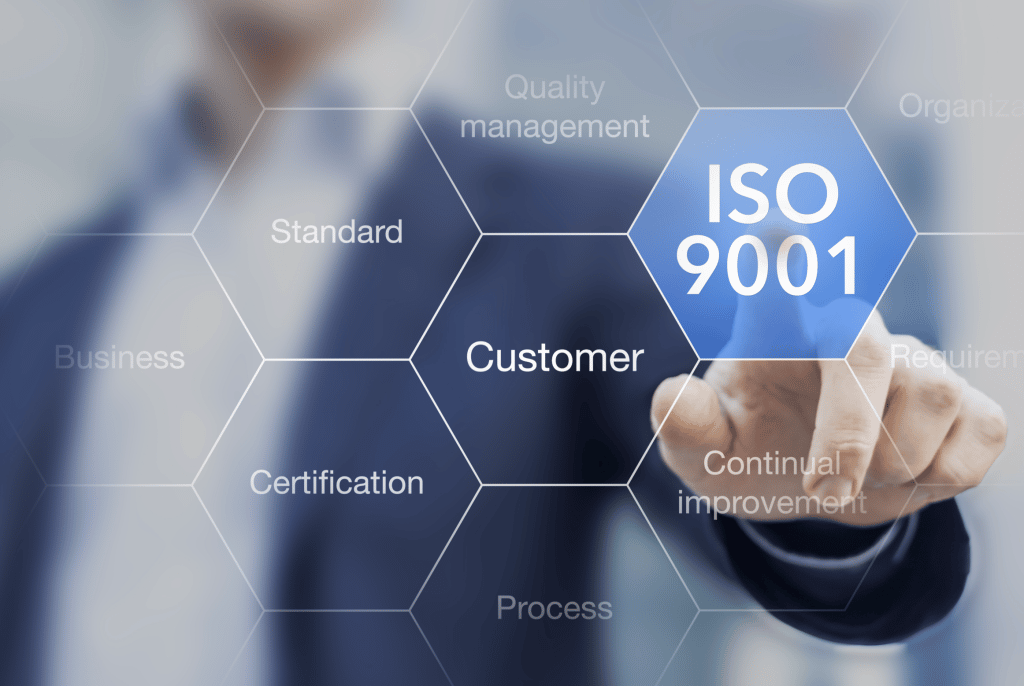Won’t it be great to streamline your processes and improve your operational efficiency? That is what obtaining ISO 9001 certification will bring to your organisation. Additionally, the certificate will also help you differentiate from the competition and demonstrate your commitment to quality management. To help you in your process of acquiring the ISO 9001 checklist, we have created a step-by-step guide that will allow you to understand what you need to do in order to achieve this beneficial accolade. Read ahead to understand how the ISO 9001 checklist will be your best friend in the certification journey.
What is the ISO 9001 standard?
The ISO 9001 standard is an internationally recognised standard for enhancing operational capabilities by implementing an effective and effervescent Quality Management System (QMS). The main purpose of the standard is to help organisations monitor and measure their performance across different business processes, so that the efficiency of these processes can be continuously improved and your capability to deliver high-quality goods or services remains intact. The standard is constantly revised, with the last update occurring in 2015, which emphasised a risk-based approach, motivating businesses to analyse all potential threats related to quality management.
More than a million organisations worldwide have lovingly adopted ISO 9001. That is the beauty of this standard, it can be attained by any company, irrespective of the size, sector, business model or complexity.
Why do businesses choose to become ISO 9001 certified?
Businesses choose to obtain the certificate because it enhances the overall business performance and fosters a culture that facilitates sustainable growth initiatives. ISO 9001-certified businesses prove their commitment of delivering excellence to the world, by showcasing that they are reliable, safe and quality focused. As a result, not only do they obtain financial gain and customer satisfaction, but pave the way for long-term success.
Seeing the ISO 9001 logo on a company builds the confidence in the brand and opens it up for new opportunities in both domestic and global markets, which would otherwise be unattainable. By help of ISO 9001 consultant you can use the advantages of ISO 9001.
Additional benefits of the certificate include:
- Improved operational efficiency.
- Reduced waste and reduced customer complaints.
- Improved cost savings through enhanced efficiency and productivity.
- Easy identification of deficiencies in products or services.
- Standing out from competitors.
- Winning and retaining new business.
- Achieving greater employee satisfaction and engagement.
- Being able to apply for government and private sector tenders.
How to implement ISO 9001 in my organisation?
Before we delve into the ISO 9001 checklist, it is pertinent to understand the implementation process. Essentially, there are ten clauses in the 2015 version of the standard which layout the requirements to build, implement and customise a QMS. This version also allows businesses to exclude the sections that do not apply to their individual practises. To implement ISO 9001 compliant QMS, business owners must follow the instructions in the clauses.
This may become inordinate, and hence to simplify the process, ISO 9001 checklist was created. For best result you should using ISO consulting sevices.
What is the ISO 9001 checklist?
The ISO 9001 checklist is a document that contains the steps of the implementation process in a questionnaire format. The language is uncomplicated, easy to understand and has high recall value, so that business owners do not need external help while attempting to adhere to the clauses of ISO 9001. Think of the checklist as a guide, that gives you a fair warning of what you need to do in order to avoid any dangerous areas in your certification journey.
12 steps checklist for ISO 9001
The 12 steps to achieving the greatest success with your QMS include:
- Leadership declaration.
- Gap analysis.
- Verifying the scope.
- Implementing the QMS and developing the QMS manual.
- Internal communication.
- Creation of the audit plan.
- Identifying roles and responsibilities.
- Refining the QMS.
- Internal audit.
- Selecting certification body and applying for stage one audit.
- Undergoing an external audit.
- Making future plans for maintaining the certificate.
Without the full support of the leadership upfront, the QMS journey cannot begin. Hence, after leadership support declaration, it is important to perform a gap analysis to identify any deficiencies between the current practice and the one that is recommended in the standard. The objective and deliverables should be laid out, roles and responsibilities should be outlined and all actions to remediate gaps should be planned when verifying the scope. All the policies related to the QMS should be implemented and internally communicated. The in-house team should create an audit plan to internally audit the QMS to check its efficiency. Next, the roles and responsibilities of the policy/process author, reviewer and approver need to be defined. This will allow you to refine your QMS and implement any system changes. All that is left is to select a certification body and apply for stage one audit. After you clear your certification audit, you must make a plan to maintain your ISO 9001 certificate by conducting yearly surveillance audits.
Conclusion.
The 12 step ISO 9001 checklist will help ensure that you hit every important milestone in your certification journey.
Angela Spearman is a journalist at EzineMark who enjoys writing about the latest trending technology and business news.

